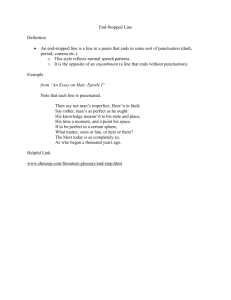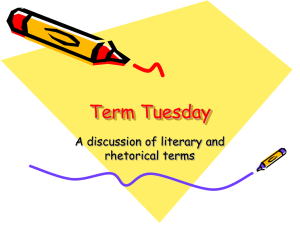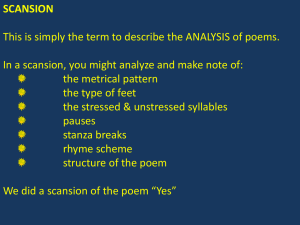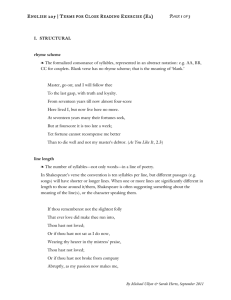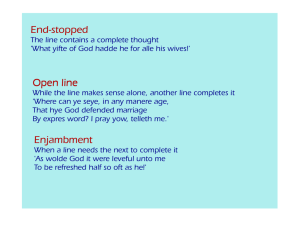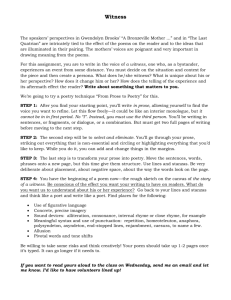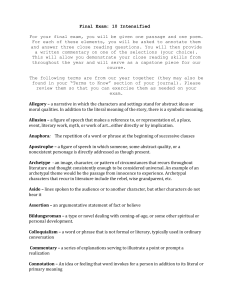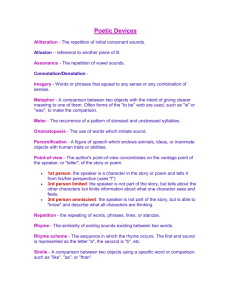page 47
advertisement
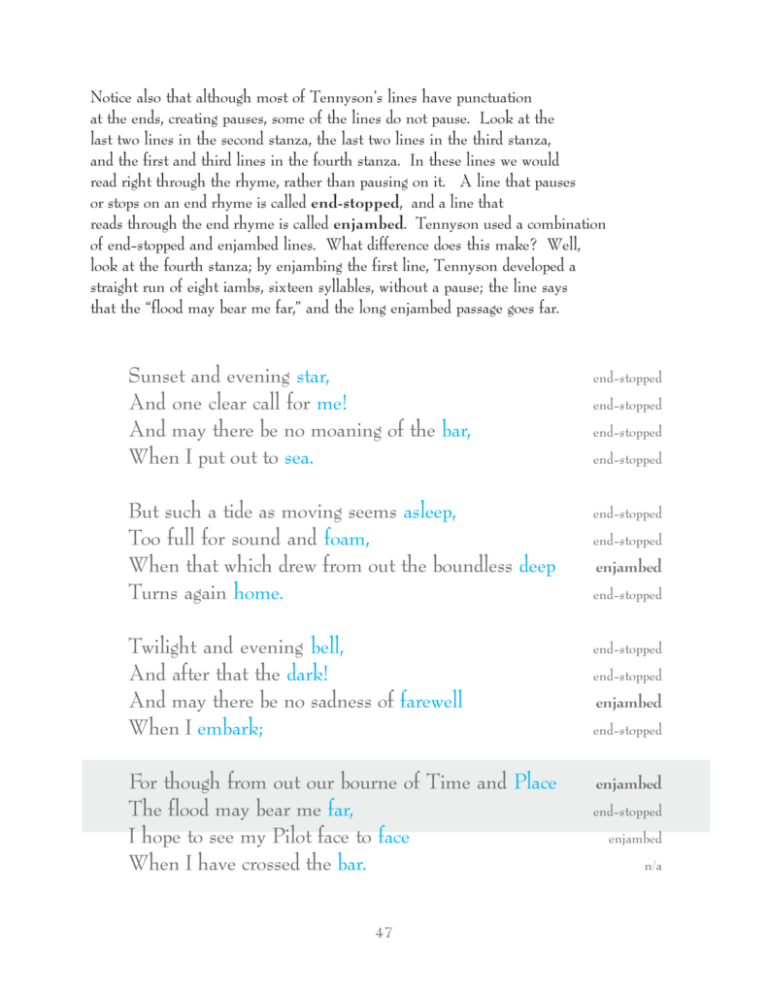
Notice also that although most of Tennyson’s lines have punctuation at the ends, creating pauses, some of the lines do not pause. Look at the last two lines in the second stanza, the last two lines in the third stanza, and the first and third lines in the fourth stanza. In these lines we would read right through the rhyme, rather than pausing on it. A line that pauses or stops on an end rhyme is called end-stopped, and a line that reads through the end rhyme is called enjambed. Tennyson used a combination of end-stopped and enjambed lines. What difference does this make? Well, look at the fourth stanza; by enjambing the first line, Tennyson developed a straight run of eight iambs, sixteen syllables, without a pause; the line says that the “flood may bear me far,” and the long enjambed passage goes far. Sunset and evening star, And one clear call for me! And may there be no moaning of the bar, When I put out to sea. end-stopped But such a tide as moving seems asleep, Too full for sound and foam, When that which drew from out the boundless deep Turns again home. end-stopped Twilight and evening bell, And after that the dark! And may there be no sadness of farewell When I embark; end-stopped For though from out our bourne of Time and Place The flood may bear me far, I hope to see my Pilot face to face When I have crossed the bar. enjambed 47 end-stopped end-stopped end-stopped end-stopped enjambed end-stopped end-stopped enjambed end-stopped end-stopped enjambed n/a
